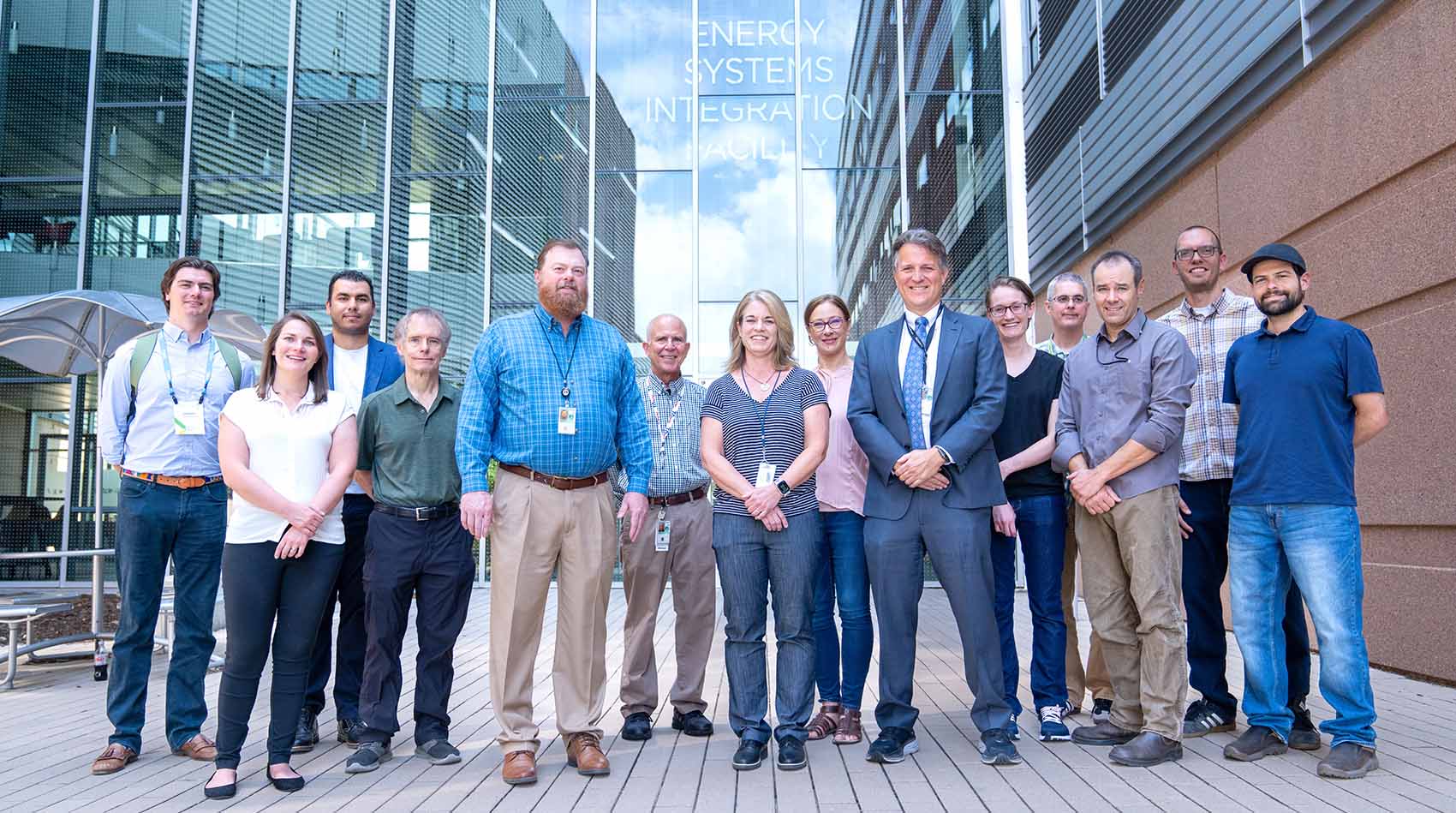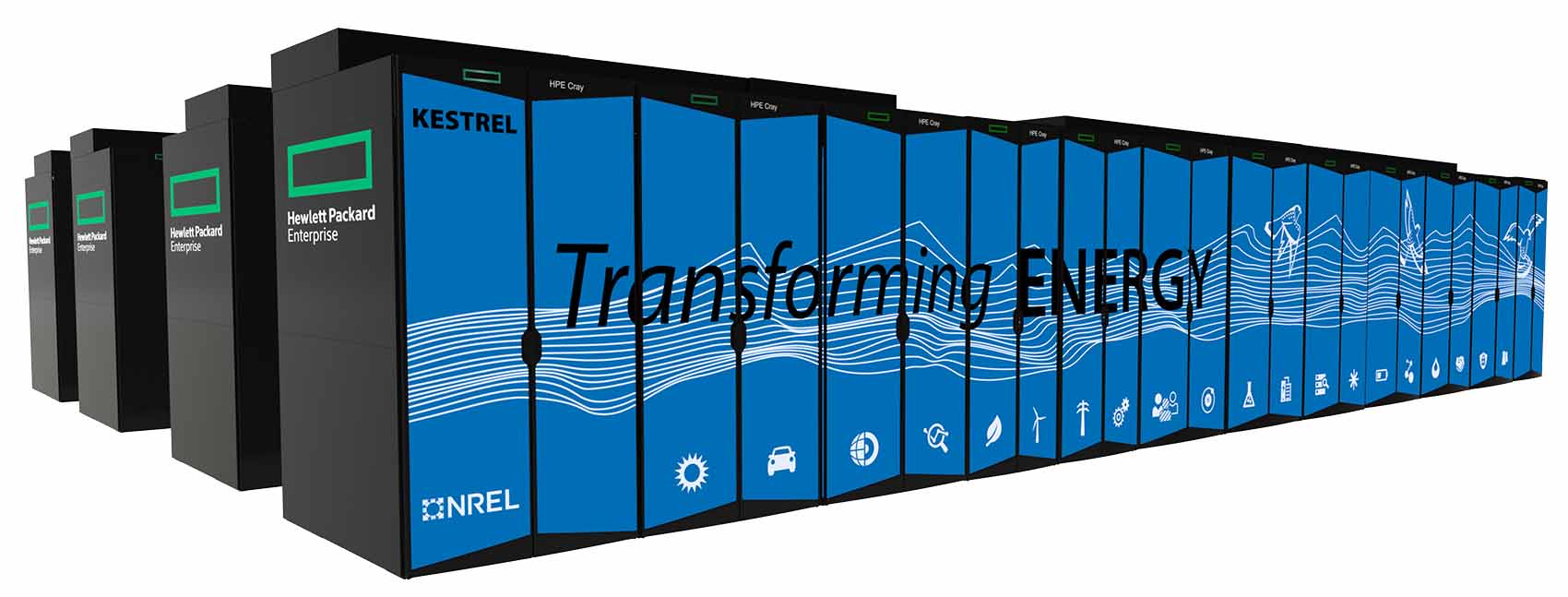Kestrel Supercomputer Ready To Energize Renewable Energy Research

After more than two years of hard work, the Kestrel supercomputer completed its full buildout to reach 44 petaflops of computing power focused on renewable energy and energy efficiency research.
Built by Hewlett Packard Enterprise, the high-performance computing system boasts more than five times the computing power of the National Renewable Energy Laboratory's (NREL's) previous supercomputer, Eagle, and will supercharge the U.S. Department of Energy (DOE) Office of Energy Efficiency and Renewable Energy (EERE).
With this summer's completion of the installation, Kestrel now adds 132 graphics processing unit (GPU) nodes—each hosting four NVIDIA H100 GPU processors—to the 2,314 existing central processing unit (CPU) nodes with two Intel Sapphire Rapids processors. The new GPU nodes are already in use by more than 60 projects, elevating the work at EERE to new heights by enabling emerging artificial intelligence and machine learning workflows.
"The new Kestrel GPU nodes are proving to be extremely powerful—our project has developed algorithms that showcase Kestrel's impressive GPU acceleration for materials and chemistry modeling," said NREL's Derek Vigil-Fowler, principal investigator on the Beyond-DFT Electrochemistry with Accelerated and Solvated Techniques (BEAST) project, funded by DOE's Office of Science. "We are leveraging the GPUs on Kestrel for high-fidelity simulation of electrocatalytic systems, with the aim of designing better catalysts for water electrolysis, fuel cells, and carbon dioxide reduction. The ability to simulate complex models of catalytic systems with high fidelity is invaluable to understanding factors that determine electrocatalytic performance, and Kestrel GPUs have demonstrated excellent efficiency and scaling for these simulations."
The work to install Kestrel in NREL's Energy Systems Integration Facility user facility data center kicked off with the arrival of the first phase of equipment—including 2,314 CPU nodes and a 95-petabyte parallel storage system—in March 2023. The CPU phase of Kestrel was installed last summer and was made available to early users, and then Kestrel opened for all projects for the start of the 2024 fiscal year. In November 2023, the CPU phase of Kestrel landed at #67 on the 62nd edition of the TOP500, an industry-standard list of the 500 most powerful computers in the world, showcasing 14.3 petaflops of performance from the CPU capability alone on Kestrel.

Excitement swelled as the remainder of the Kestrel system arrived in February 2024: GPU nodes featuring NVIDIA's latest H100 GPUs. Testing and validation of the new GPU nodes, and their integration into the full Kestrel system, was completed in May, when early users were invited to test their codes and help get the system ready for all users. Kestrel's GPU nodes are now released to all Kestrel users to accelerate research critical to the energy transition.
"With Kestrel, researchers have access to advanced computing capabilities to do high-quality research at the pace and scale necessary to enable the energy transition," said NREL's Kristin Munch, laboratory program manager for advanced computing and Kestrel project manager. "We've been building to this moment for more than two years with a tremendous team working diligently to bring this impressive system online for EERE researchers."
Now that Kestrel is fully complete, researchers are already plugging in and using Kestrel's power to accelerate energy research, driving advancements in energy efficiency, sustainable transportation, renewable power, and energy systems integration. The FY 2023 Advanced Computing Annual Report details how high-performance computing is advancing clean energy research and scientific collaboration.
"We are super excited to have the full capabilities of Kestrel available to the research community," said NREL's Aaron Andersen, advanced computing operations group manager. "Kestrel's CPU nodes utilize 100% direct liquid cooling for all components. From an efficiency standpoint, Kestrel has more than two times the efficiency of our previous supercomputer, Eagle, providing 10.4 gigaflops per watt versus Eagle at 4.7 gigaflops per watt. Kestrel continues NREL's leadership in efficient computing."
Learn more about Kestrel and its capabilities.

